Mitsubishi A6M3
Zero Fighter Model 32
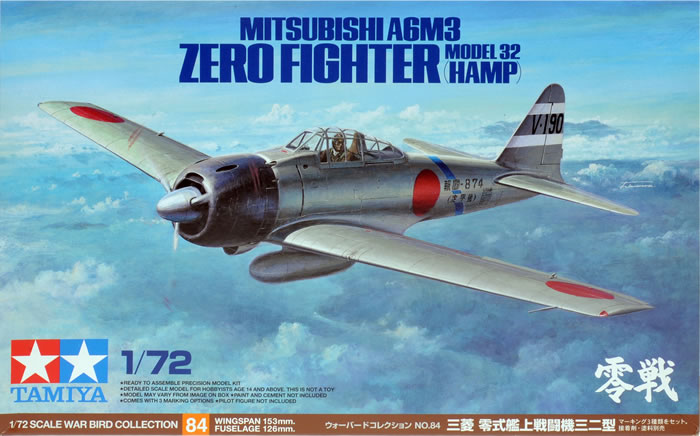
Tamiya, 1/72 scale
S
u m m a r y |
| Catalogue Number and Description: |
Tamiya Kit No. 60784 - Mitsubishi A6M3 Zero Fighter Model 32 (Hamp). |
| Scale: |
1/72 |
| Contents and Media: |
72 parts in grey plastic; five parts in clear; two polythene caps and decals for three marking options. |
| Price: |
¥ 1,400 Japanese Recommended Retail Price |
| Review Type: |
FirstLook |
| Advantages: |
Perfectly moulded; accurate; excellent detail; alternative parts for closed or open canopy |
| Disadvantages: |
|
| Conclusion: |
Even if you are not a big fan of Japanese aircraft, you would be doing yourself a favour by sampling the sheer excellence of Tamiya's 1/72 scale Zero family. |
Reviewed by Brett Green

Tamiya's 1/72 scale A6M2b Zero will be available online from
Squadron
Tamiya released their game-changing 1:32 scale A6M5 Zero more than a decade ago, followed by their stunning 1:48 scale Zero in 2008.
It was therefore pleasing but no surprise when Tamiya released a brand new 1:72 scale Mitsubishi A6M5 Zero in the first quarter of 2012 with a Pearl Harbour A6M2 following before the end of that year.
Tamiya has now further expanded the family with a new 1:72 scale A6M3 Type 32. This variant featured clipped wing tips and a new engine, but it suffered from lower range due to its smaller fuel capacity.
Tamiya’s new 1:72 scale A6M3 Type 32 comprises 72 parts in grey plastic; five parts in clear; two polythene caps and decals for three marking options, two in overall IJN Grey-Green based in New Guinea, and one with Green upper surfaces as part of the Oita Naval Air Group.
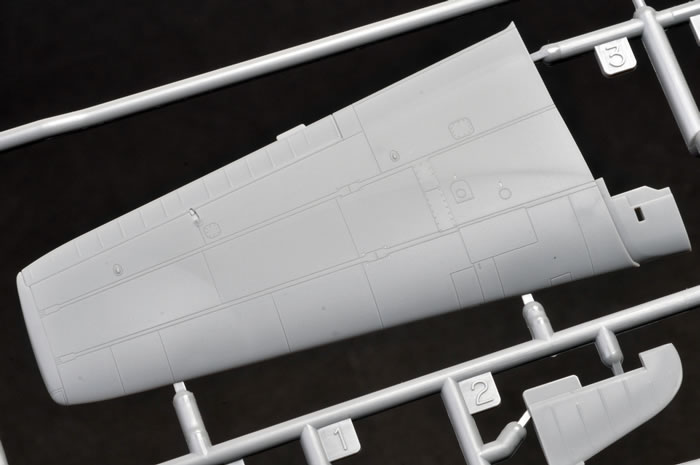
In common with its earlier siblings, moulding quality is perfect. Surface detail is remarkable for this small scale, mainly by way of very finely recessed panel lines, with some subtly raised fabric strips on control surfaces. Selected rows of subtle rivets are present along some of the lower wing panel lines too.
Detail is excellent throughout, but the cockpit in particular is every bit as good as the earlier Zero front offices. The seat is realistically thin. Lightening holes are represented by indentations, but a few minutes with a pin vise will hollow them out.
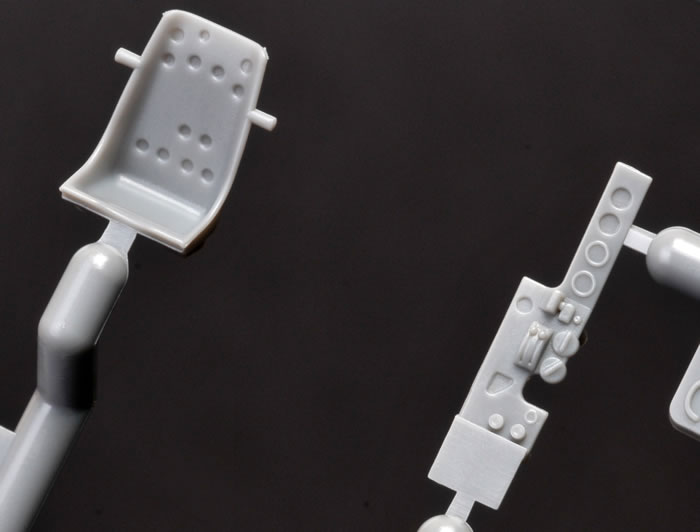
Sidewall detail is deep and accurate, with the various quadrants and boxes added from separate parts. The floor features an open space for the clear viewing window. The instrument panel is mounted on the back of the ammunition bins and with the gun breeches included. The panel features decal instruments, which should look fantastic if carefully aligned.
The wheel wells are authentically deep and busy.
The engine is equally good. It is made up of only four parts, but it looks great. Cooling fin detail is crisp, while pushrods are moulded to the front cylinder face.
The one-piece engine cowling is seamless.
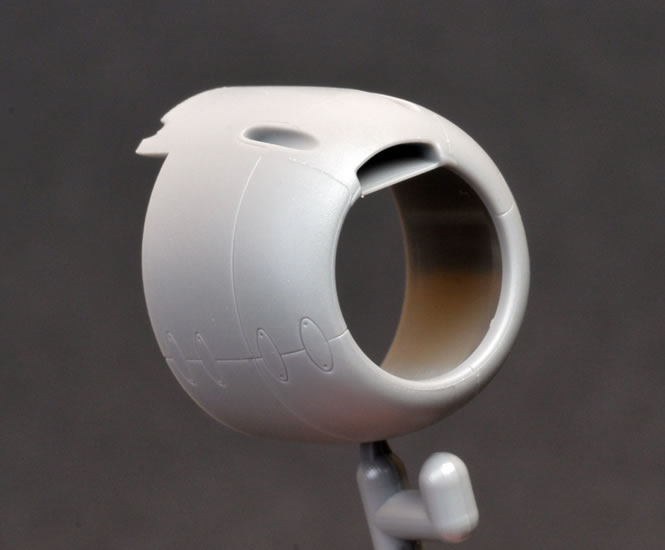
Cowl flaps are moulded shut, and all control surfaces are in neutral positions, including the closed landing flaps.
Poly caps are used to fit the propeller assembly and the drop tank.
The clear parts are thin and completely free of distortion. Alternative canopy parts are included for closed or open configurations – a nice touch. A well detailed reflector gunsight is also provided in clear.
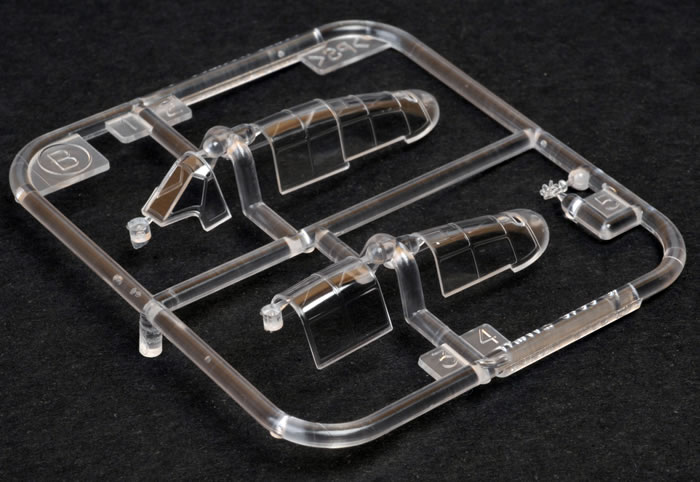
The decal sheet includes printed harness straps for the pilot's seat.
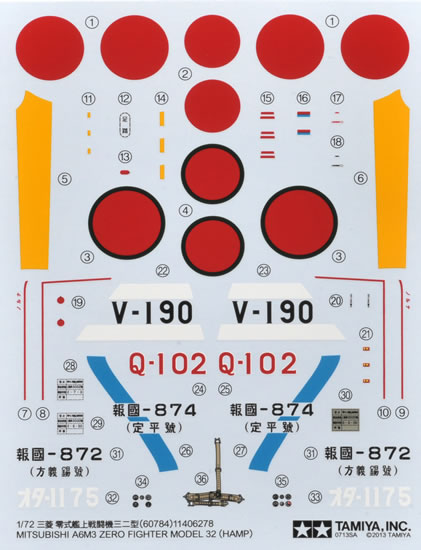
Tamiya’s 1:48 scale Zeros include canopy masks but unfortunately still none for its smaller cousins.
Tamiya's 1:72 A6M3 Type 32 Zero is beautifully detailed, with one of the best small scale cockpits straight from the box available today. The model should be a pleasure to build thanks to the thoughtful planning of Tamiya's designers too.
Even if you are not a big fan of Japanese aircraft, you would be doing yourself a favour by sampling the sheer excellence and of Tamiya's new 1:72 scale Mitsubishi Zeros.
Thanks to Tamiya Japan for the sample
Tamiya kits are distributed in the UK by The Hobby Company Limited

Text and Images Copyright © 2012 by Brett Green
Page Created 5 September, 2012
Last updated
13 September, 2013
Back to HyperScale Main Page
|
